Tools
The following pages contain a variety of tools utilized in this webtext's staging of an encounter between digital seriality and the digital humanities. As outlined in the main narrative and case-study components of this project, tools and techniques of "distant reading" and data visualization have been essential to staging this encounter, which involves a hybrid approach inspired by methodologies of both the digital humanities (DH) and critical code studies (CCS). This combination of tools is designed to reveal connections between low-level and high-level serialization processes, effectively correlating code and community.
As I have emphasized in the main textual narrative, however, these tools are themselves of greater import than the particular case study I have put forward. For they enable countless other case studies, correlations, discoveries, and insights. This collection of interactive "tools" should therefore not be regarded as a mere "appendix" to my argument, but should instead be seen to constitute (following a quasi-Derridean logic of "supplementarity") the project's very core.
Finally, then, these tools are offered as "things to think with" and with which to continue the work begun here. All of the insights presented in this webtext were gained in and through the process of struggling to develop a set of tools that would be adequate to my object of study. It is my hope, of course, that they will prove useful for others, who might adapt and extend their application further. If, however, these tools prove inadequate, I can only hope that the struggle to modify or replace them will prove as fruitful as the process leading to their development.

Mods & Interfaces
This page allows users to filter and sort the title screens of 240 Super Mario Bros. mods, all taken from ROMhacking.net's database. Sorting and filtering can be done by year, by modder, and by mod name, as well as through a quick search via text input. This tool can be useful for comparing the interfaces of mods by the same modder, from the same year, or in cases where a connection or correlation between mods or modders has been identified with the help of social network graphs or code comparisons. In addition, the title screens themselves contain a good deal of metadata, including names, dates, instructions to the user, or references to software and to community formations.

Basic Metadata
This page offers visualizations of basic metadata derived from ROMhacking.net's collection of Super Mario Bros. mods. The interactive visualizations, made with Tableau, contains basic information on the number of mods released each year, the most active modders, and trends concerning the types of mods being produced. These visualizations can be useful in connection with tools revealing more detailed information about the mods and the modding community.
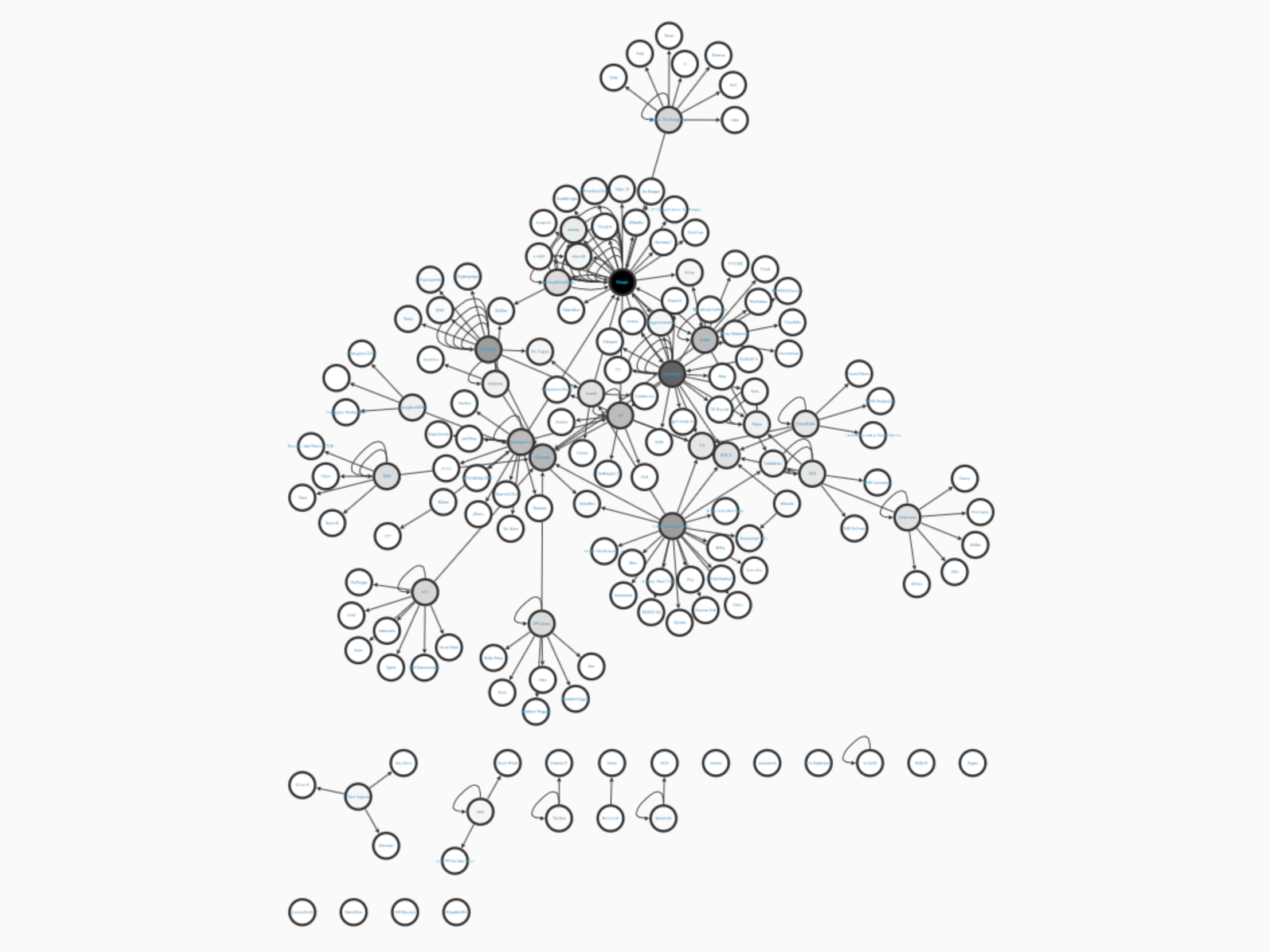
Community Networks
These visualizations of the modding community, constructed on the basis of metadata contained in paratextual documents (such as "readme" files), were made with Cytoscape, an open source network visualization platform. All of the visualizations are interactively scalable and manipulable; for example, the individual nodes can be rearranged in order to inspect the connections between Super Mario Bros. modders and online modding communities, while other parameters can be selected via the dropdown menus. See also the case study for examples of usage in conjunction with other tools included in this webtext.

Extent of Modification
The visualization on this page offers information about the extent of modification that a given mod patch file instructs the computer to execute with respect to the original Super Mario Bros. ROM. In other words, this interactive visualization, which can be sorted and filtered by modder, mod, or even by a range of particular byte addresses, provides basic numerical information about the amount of change contained in a mod or set of mods. This can be useful for purposes of comparison and for identifying and narrowing down possible correlations and connections between modders or their mods.
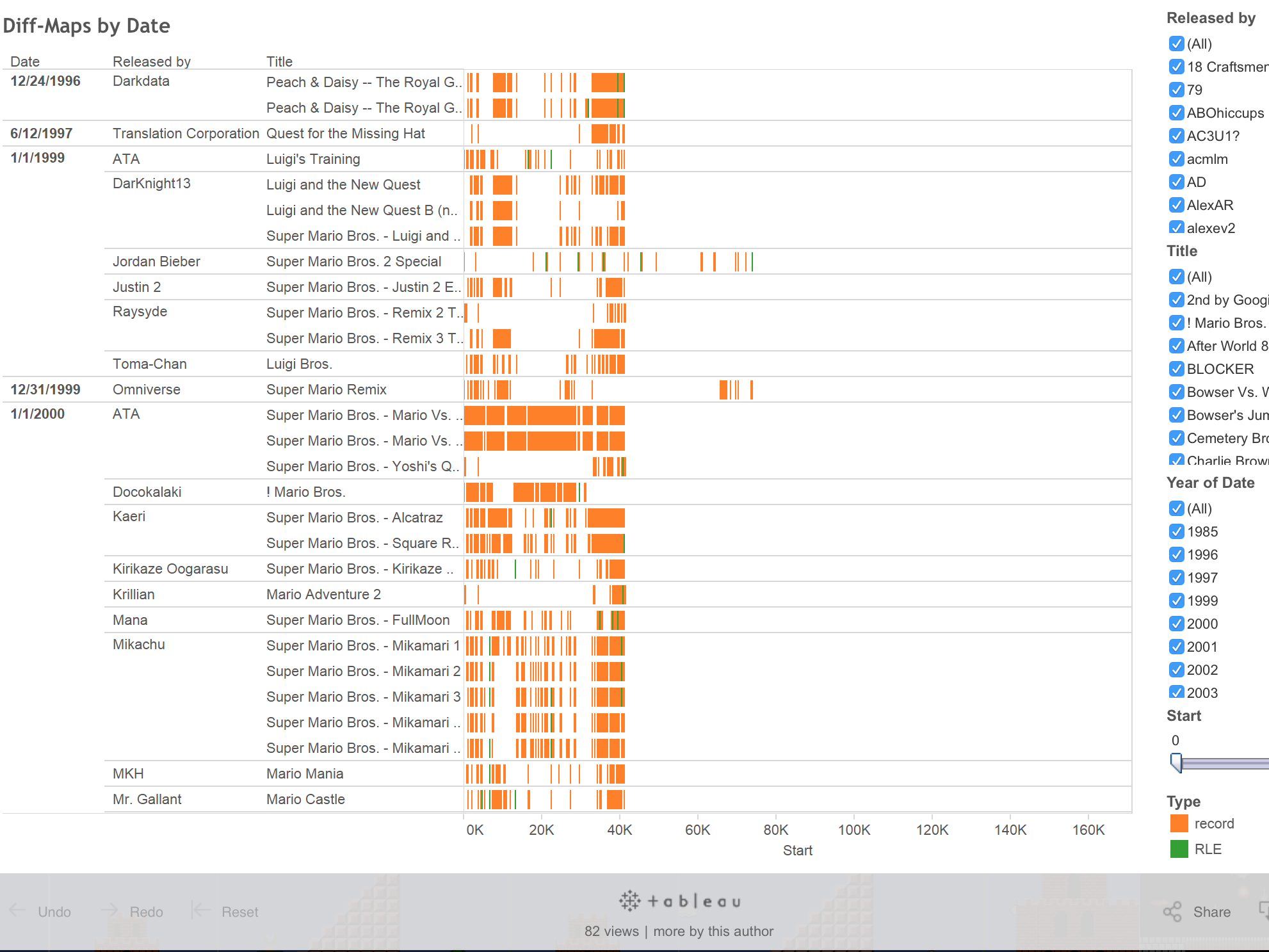
Code "Diff" Maps (Sorted by Date)
These visualizations offer the core means of conducting a "distant reading" of the code of all 240 Super Mario Bros. mods contained in the data set. Sorted here by date, these Gannt charts depict the location of byte-level modifications in the game ROM. Filterable by modder, mod title, year of release, and range of particular byte addresses (via the "Start" slider at the bottom right), this chart is particularly useful for quasi-forensic analysis and refining connections discovered in network analyses. These "diff" maps mediate between high-level metadata and low-level engagement with the code itself.
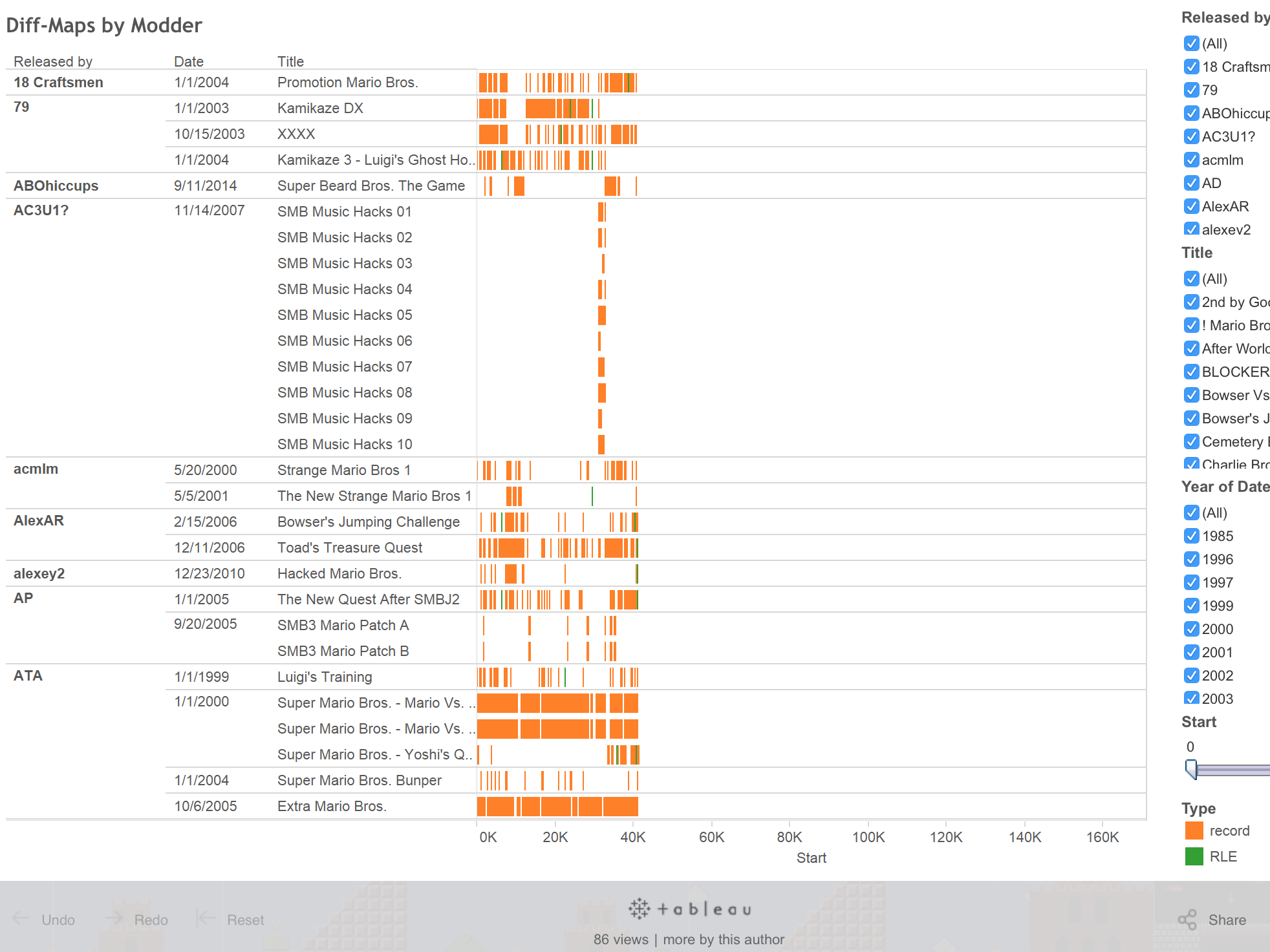
Code "Diff" Maps (Sorted by Modder)
These visualizations offer the core means of conducting a "distant reading" of the code of all 240 Super Mario Bros. mods contained in the data set. Sorted here by modder, these Gannt charts depict the location of byte-level modifications in the game ROM. Filterable by modder, mod title, year of release, and range of particular byte addresses (via the "Start" slider at the bottom right), this chart is particularly useful for quasi-forensic analysis and refining connections discovered in network analyses. These "diff" maps mediate between high-level metadata and low-level engagement with the code itself.
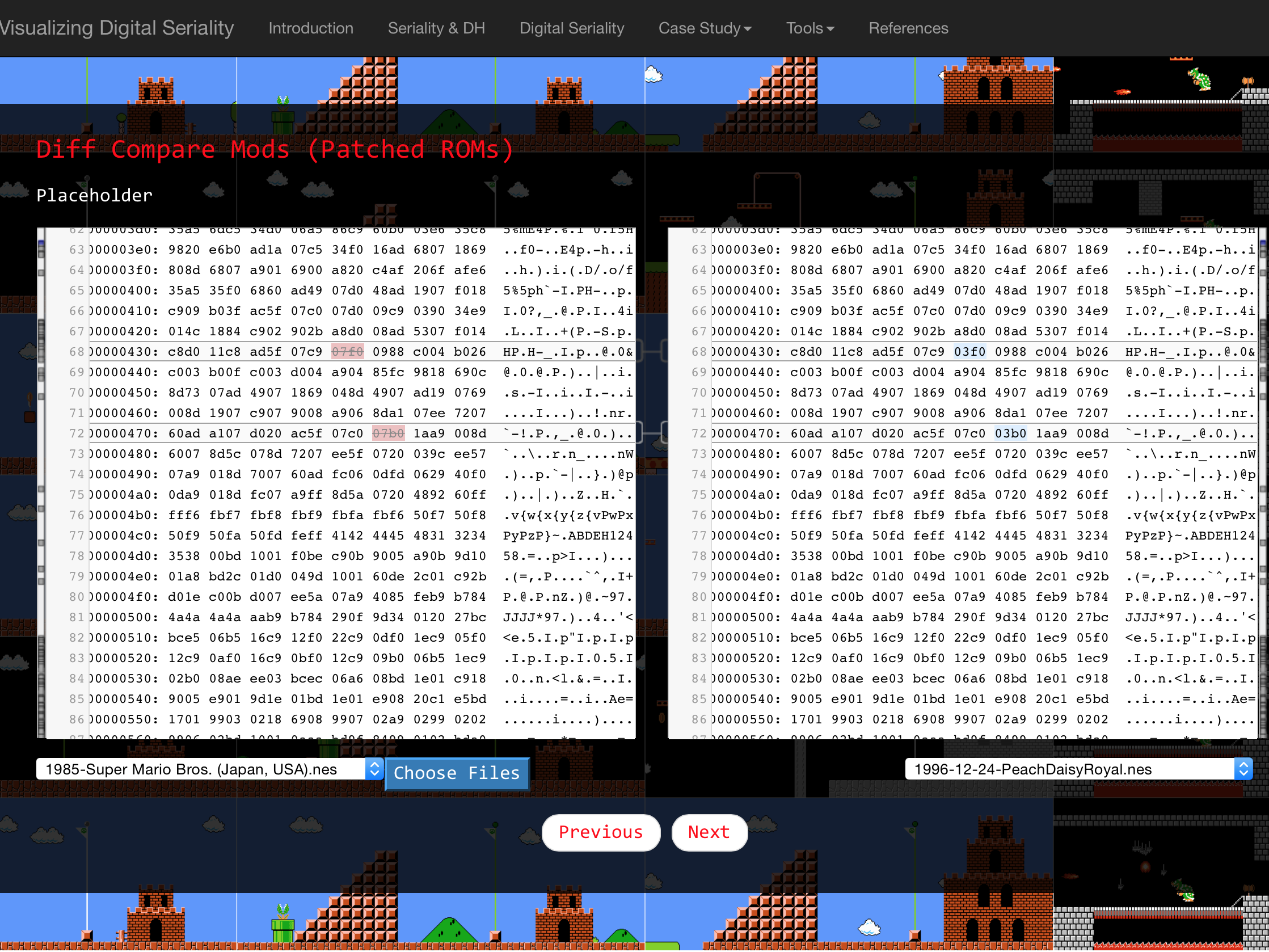
"Diff" Compare Code (Patched ROMs)
This page enables low-level analysis of mod files, accessed here through a browser-based hex editor. Two files (from the complete collection of patched ROMs, as well as the original unpatched ROM) can be selected for byte-level "diff" analysis. In comparison with the Tableau-based "diff" maps, which reveal only the location of modifications, this tool further enables identification of modified contents. As a tool for "close reading" of a pair of files, it is best used in conjunction with the broad "distant reading" of the other tools, in order to zero in on correlations and differences previously identified in a cursory manner. Beyond this, however, the tool can be used on its own to compare files with a known relation (e.g. different versions of the same mod or various mods by the same modder).
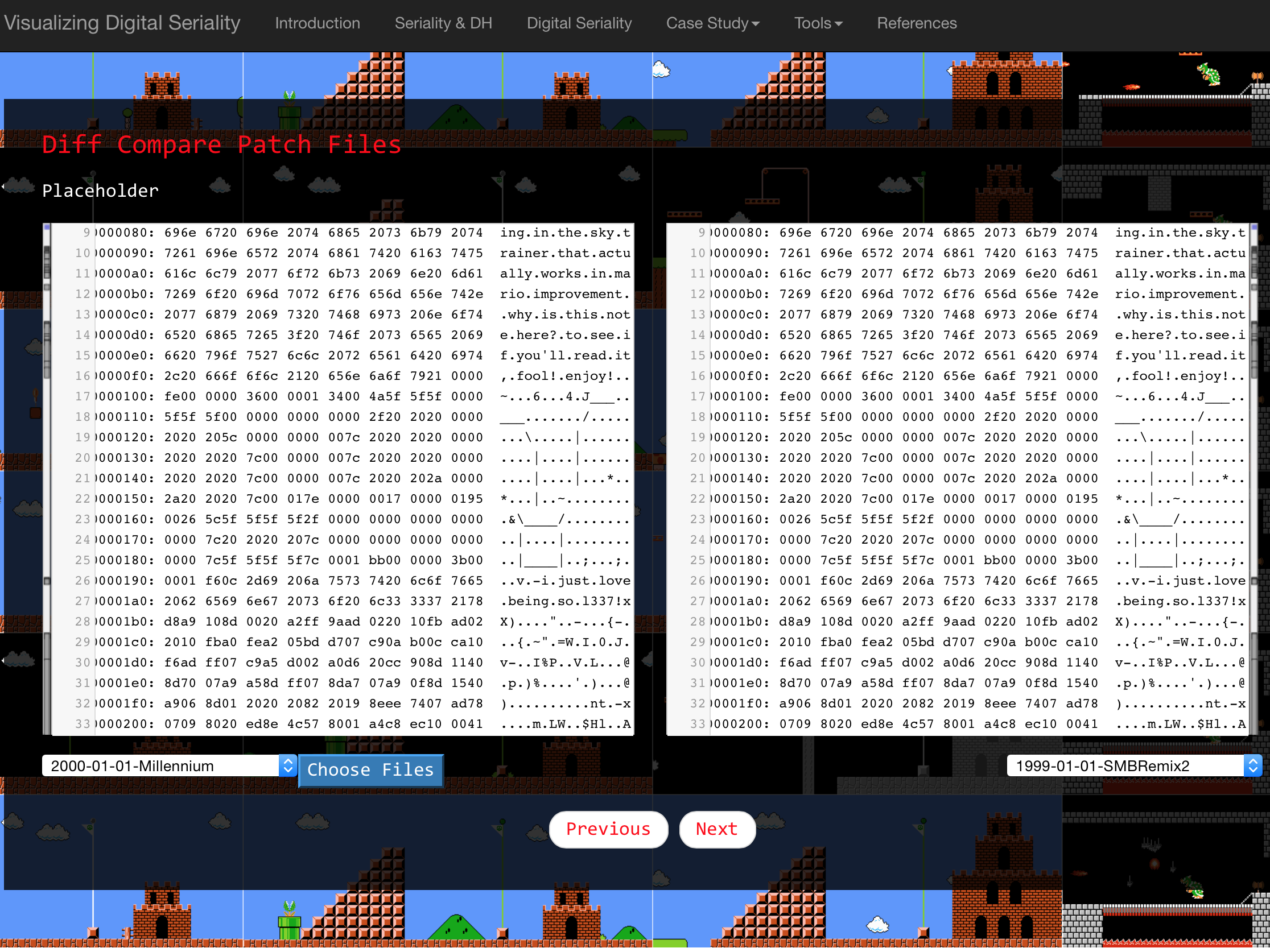
"Diff" Compare Code (Patches)
This page enables low-level analysis of mod files, accessed here through a browser-based hex editor. Two files (from the complete collection of .ips format patch files) can be selected for byte-level "diff" analysis. In comparison with the Tableau-based "diff" maps, which reveal only the location of modifications, this tool further enables identification of modified contents. As a tool for "close reading" of a pair of files, it is best used in conjunction with the broad "distant reading" of the other tools, in order to zero in on correlations and differences previously identified in a cursory manner. Beyond this, however, the tool can be used on its own to compare files with a known relation (e.g. different versions of the same mod or various mods by the same modder).
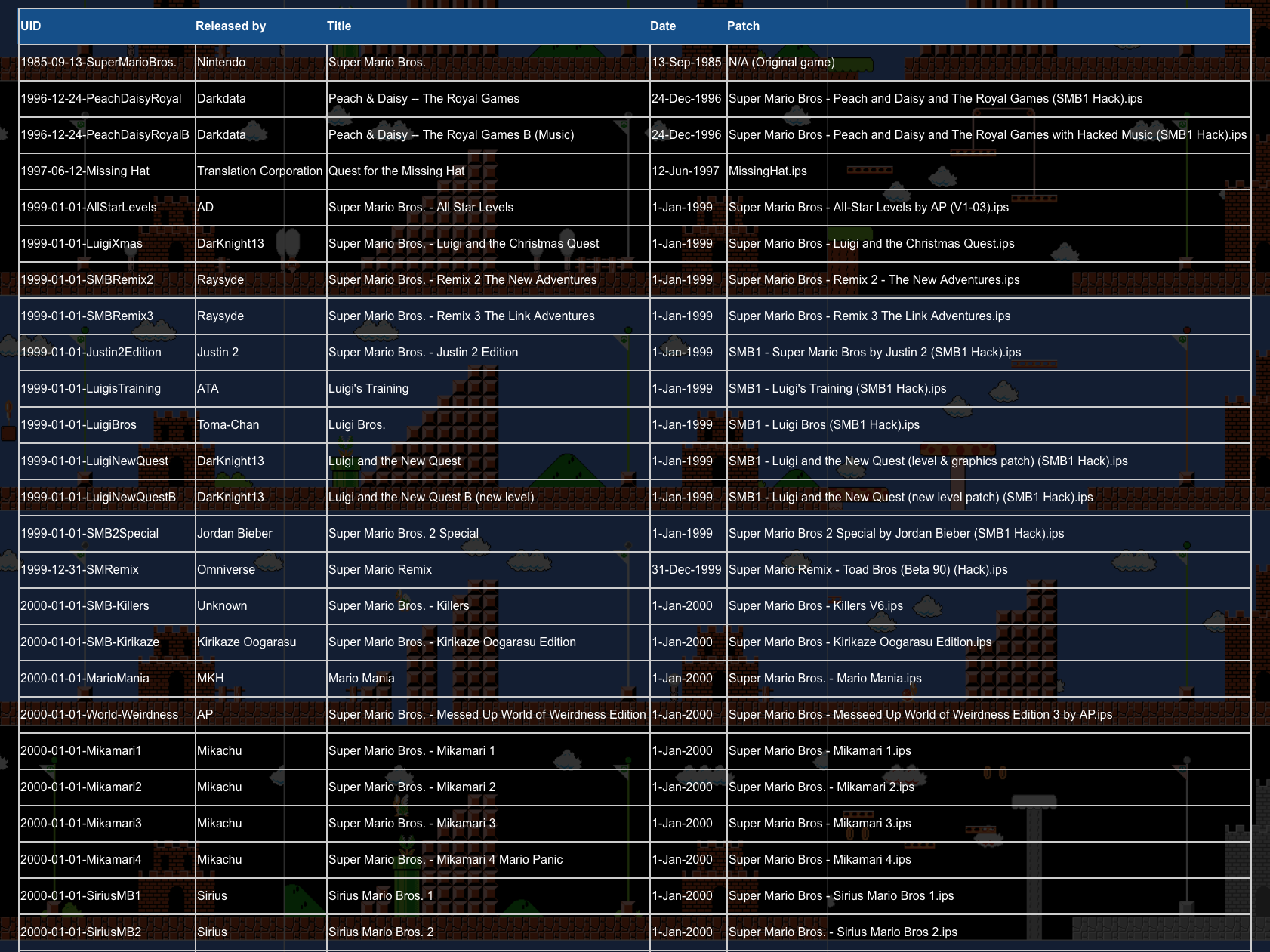
Data: File Info
This page contains the raw tabular data upon which the visualizations and other tools build. Users are able to copy the data set into a spreadsheet or other format for use offline or in other tools. Contained here is information about modder names, mode titles, release dates, and patch filenames. All data is collated from ROMhacking.net.
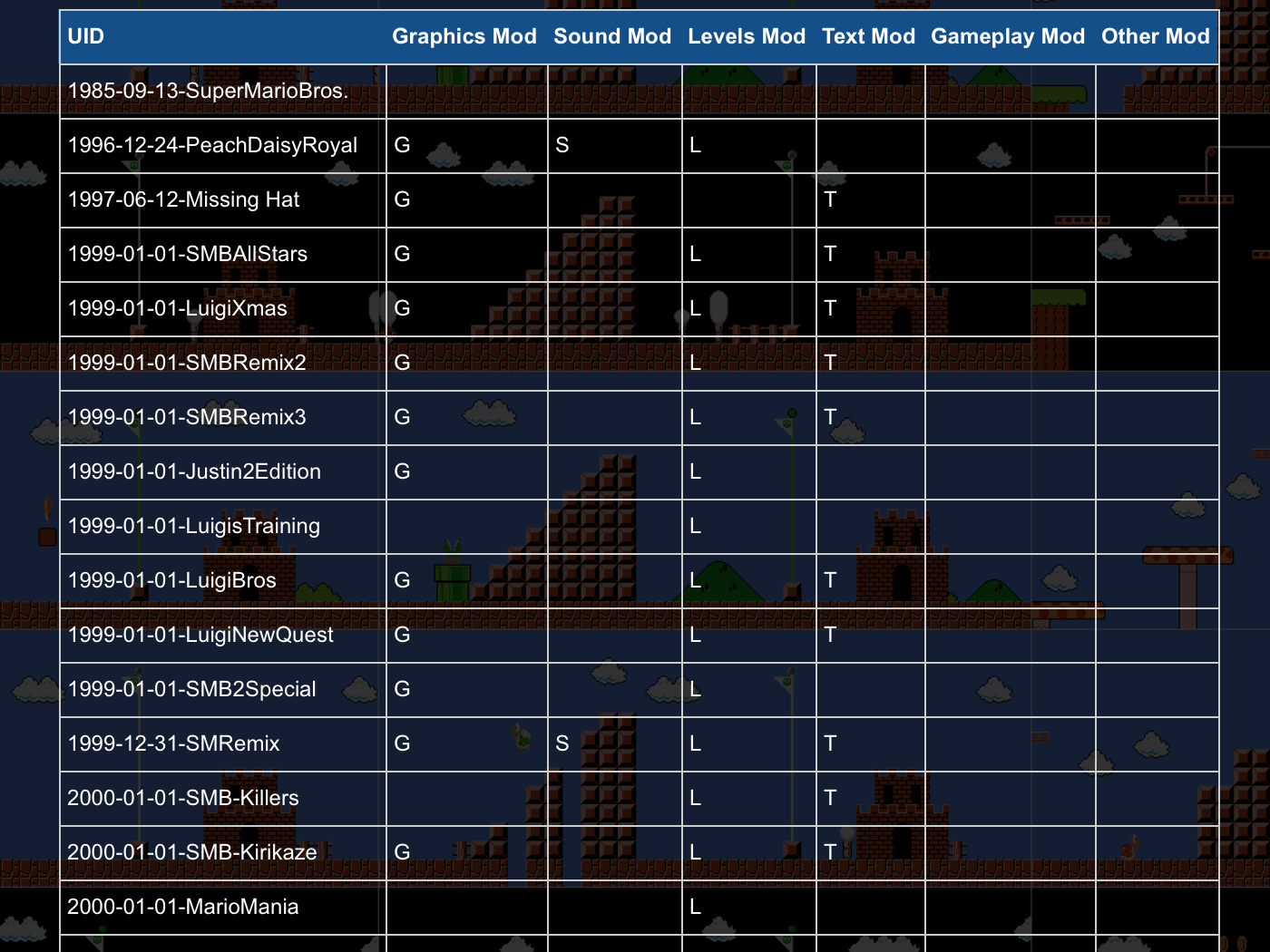
Data: Mod Type
This page contains the raw tabular data upon which the visualizations and other tools build. Users are able to copy the data set into a spreadsheet or other format for use offline or in other tools. Contained here is information about mod types (modifications of graphics, sound, levels, text, gameplay, or other). All data is collated from ROMhacking.net.
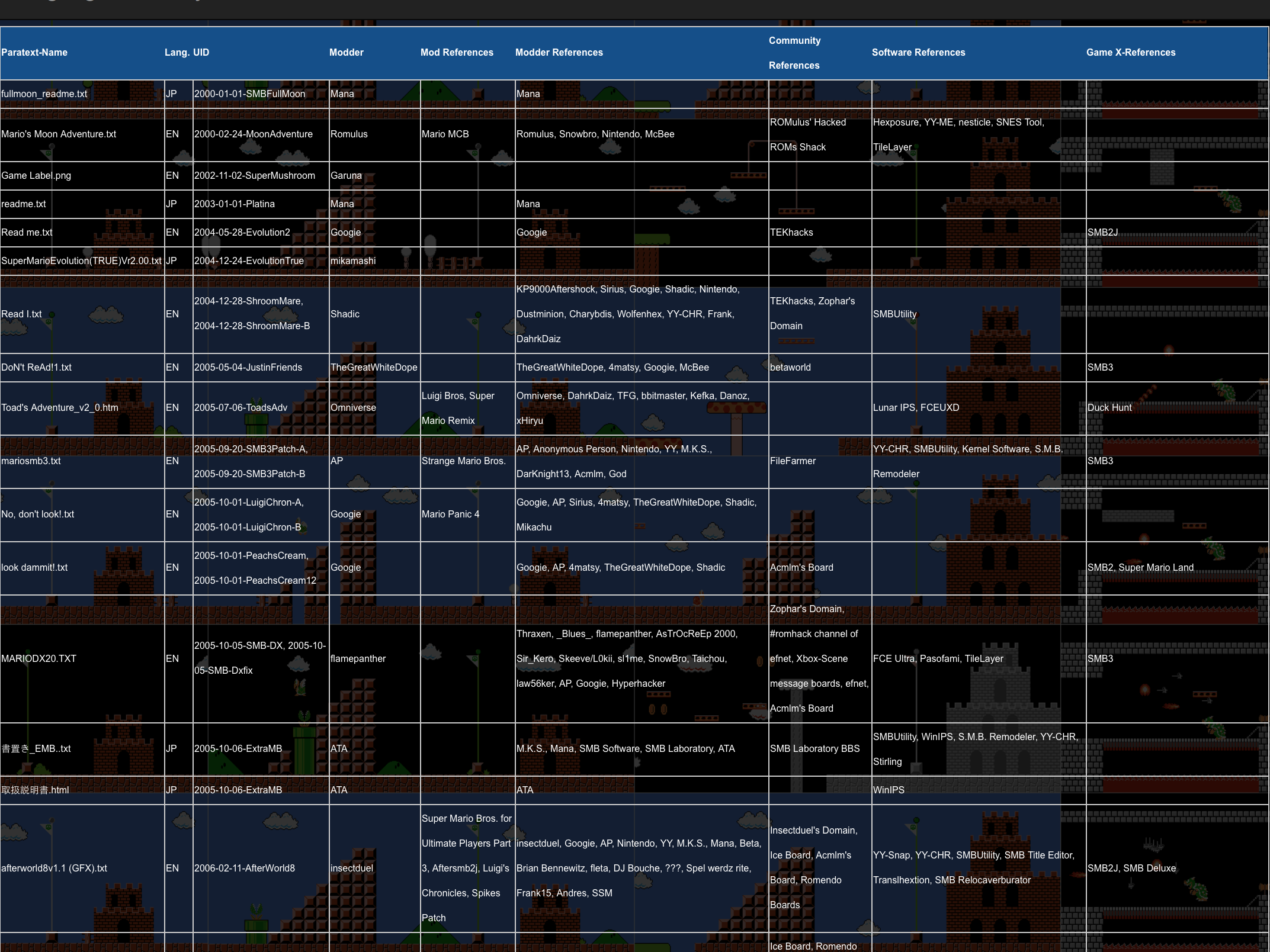
Data: Paratextual Metadata
This page contains the raw tabular data upon which the visualizations and other tools build. Users are able to copy the data set into a spreadsheet or other format for use offline or in other tools. Contained here is information culled from paratextual documents such as "readme" files, including references to other modders, mods, community formations, software, or games). All data is collated from ROMhacking.net.